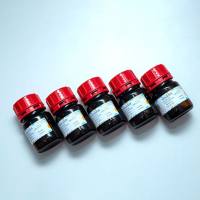Determination of Proteins, Phosphatidylethanolamine, and Phosphatidylserine in Lipid-Rich Materials by Analysis of Phenylthiocarbamyl Derivatives
互联网
互联网
相关产品推荐

Trimethyl-Histone H3 (Lys9) Peptide, biotin conjugate,Histones are basic nuclear proteins that are responsible for the nucleosome structure of the chromosomal fiber in eukaryotes.,阿拉丁
¥3058.90

03190034珀金埃尔默标准物质Tin DSC Calibration Reference Materials PerkinElmer
¥1637

软骨素酶AC 来源于肝素黄杆菌,9047-57-8,重组, expressed in <i>E. coli</i>,≥200 units/mg protein, For Chondroitin Sulfate Analysis,阿拉丁
¥7138.90

GC-rich PCR Buffer (4种套装),阿拉丁
¥197.90

乳糜微粒,人血浆,≥95%, Density: <0.95 g/ml; Composition: 98% lipid, 2% protein.,阿拉丁
¥1099.90
相关问答

